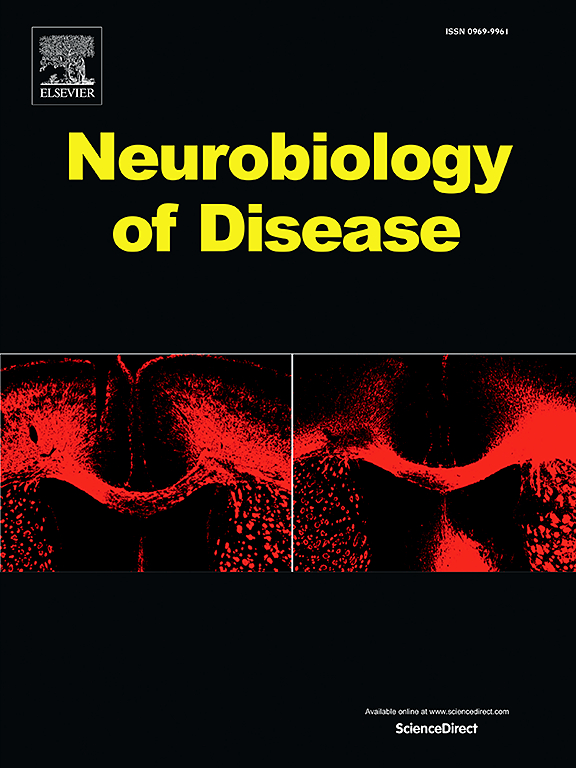Activation of hypoactive parvalbumin-positive fast-spiking interneurons restores dentate inhibition to reduce electrographic seizures in the mouse intrahippocampal kainate model of temporal lobe epilepsy
IF 5.1
2区 医学
Q1 NEUROSCIENCES
引用次数: 0
Abstract
Parvalbumin-positive (PV+) GABAergic interneurons in the dentate gyrus provide powerful perisomatic inhibition of dentate granule cells (DGCs) to prevent overexcitation and maintain the stability of dentate gyrus circuits. Most dentate PV+ interneurons survive status epilepticus, but surviving PV+ interneuron mediated inhibition is compromised in the dentate gyrus shortly after status epilepticus, contributing to epileptogenesis in temporal lobe epilepsy. It is uncertain whether the impaired activity of dentate PV+ interneurons recovers at later times or if it continues for months following status epilepticus. The development of compensatory modifications related to PV+ interneuron circuits in the months following status epilepticus is unknown, although reduced dentate GABAergic inhibition persists long after status epilepticus. We employed whole-cell patch-clamp recordings from dentate PV+ interneurons and DGCs in slices from male and female sham controls and intrahippocampal kainate (IHK) treated mice that developed spontaneous seizures months after status epilepticus to study epilepsy-associated changes in dentate PV+ interneuron circuits. Electrical recordings showed that: 1) Action potential firing rates of dentate PV+ interneurons were reduced in IHK treated mice up to four months after status epilepticus; 2) spontaneous inhibitory postsynaptic currents (sIPSCs) in DGCs exhibited reduced frequency but increased amplitude in IHK treated mice; and 3) the amplitude of IPSCs in DGCs evoked by optogenetic activation of dentate PV+ cells was upregulated without changes in short-term plasticity. Video-EEG recordings revealed that IHK treated mice showed spontaneous electrographic seizures in the dentate gyrus and that chemogenetic activation of PV+ interneurons abolished electrographic seizures. Our results suggest not only that the compensatory changes in PV+ interneuron circuits develop after IHK treatment, but also that increased PV+ interneuron mediated inhibition in the dentate gyrus may compensate for cell loss and reduced intrinsic excitability of dentate PV+ interneurons to stop seizures in temporal lobe epilepsy.
激活低活性副发光素阳性快速尖峰中间神经元可恢复齿状突起抑制,从而减少小鼠海马内凯恩酸盐颞叶癫痫模型的电图癫痫发作。
齿状回中的副发光素阳性(PV+)GABA能中间神经元对齿状颗粒细胞(DGC)提供强大的周围抑制,以防止过度兴奋并维持齿状回回路的稳定。大多数齿状回 PV+ 中间神经元能在癫痫状态下存活,但存活的 PV+ 中间神经元介导的抑制作用在癫痫状态后不久就会在齿状回受到损害,从而导致颞叶癫痫的癫痫发生。目前还不确定齿状回 PV+ 中间神经元受损的活动是在后期恢复,还是在状态性癫痫后持续数月。虽然齿状GABA能抑制作用的减弱在癫痫状态持续很长时间后仍然存在,但癫痫状态持续数月后与PV+中间神经元回路相关的代偿性改变的发展情况尚不清楚。我们采用全细胞膜片钳记录了雌雄假对照组和经海马内凯恩酸盐(IHK)处理的小鼠切片中的齿状PV+中间神经元和DGCs,这些小鼠在状态性癫痫数月后出现自发性癫痫发作,我们以此来研究与癫痫相关的齿状PV+中间神经元回路的变化。电记录显示1) IHK 治疗小鼠的齿状 PV+ 中间神经元的动作电位发射率在癫痫状态持续四个月后降低;2) IHK 治疗小鼠的 DGCs 自发抑制性突触后电流(sIPSCs)频率降低,但振幅增加;3) 光遗传激活齿状 PV+ 细胞诱发的 DGCs IPSCs 振幅上调,但短期可塑性没有变化。视频-EEG记录显示,IHK处理的小鼠在齿状回出现自发性电图癫痫发作,而化学发光激活PV+中间神经元可消除电图癫痫发作。我们的研究结果表明,IHK 治疗后,PV+中间神经元回路不仅会发生代偿性变化,而且齿状回中 PV+中间神经元介导的抑制作用的增强可能会补偿细胞的缺失和齿状回 PV+中间神经元内在兴奋性的降低,从而阻止颞叶癫痫的发作。
本文章由计算机程序翻译,如有差异,请以英文原文为准。
求助全文
约1分钟内获得全文
求助全文
来源期刊

Neurobiology of Disease
医学-神经科学
CiteScore
11.20
自引率
3.30%
发文量
270
审稿时长
76 days
期刊介绍:
Neurobiology of Disease is a major international journal at the interface between basic and clinical neuroscience. The journal provides a forum for the publication of top quality research papers on: molecular and cellular definitions of disease mechanisms, the neural systems and underpinning behavioral disorders, the genetics of inherited neurological and psychiatric diseases, nervous system aging, and findings relevant to the development of new therapies.
 求助内容:
求助内容: 应助结果提醒方式:
应助结果提醒方式:


